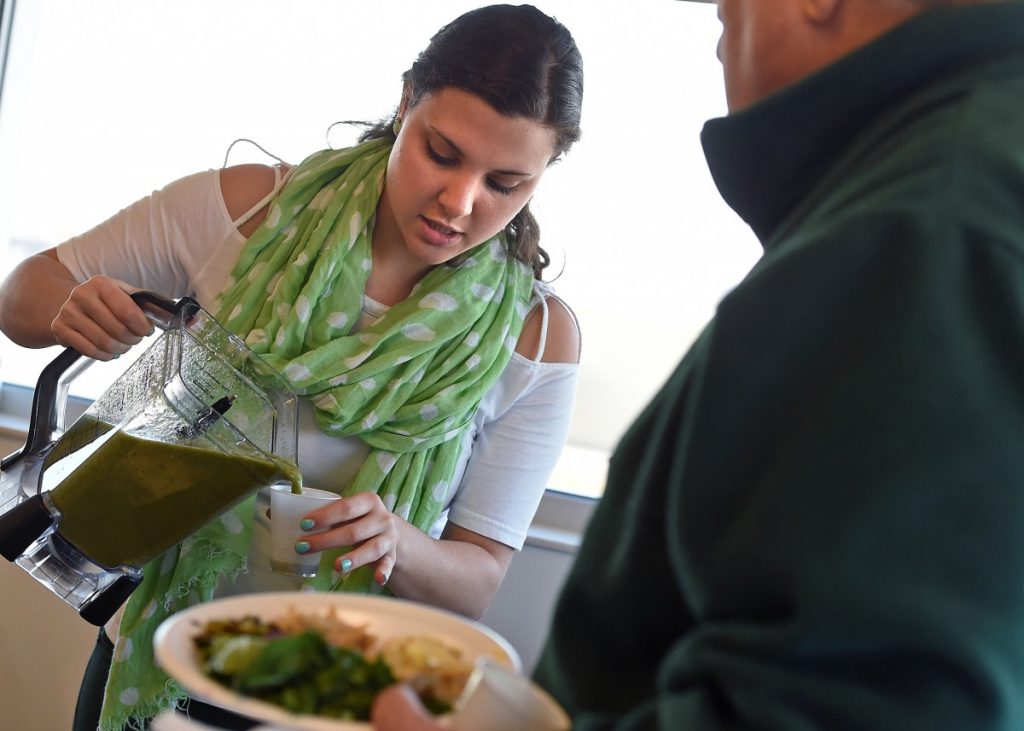MORGANTOWN — “Growing up, did your parents make you eat vegetables?” asked Judy Siebart, a registered dietician from WVU Medicine. Most people said “yes” but mentioned typical vegetables, such as corn, beans or potatoes.
Then Siebart asked “did your parents make you eat green vegetables?” And while most acknowledged that they may have eaten green beans as a child, they weren’t sure about kale or spinach.
“Greens should be a staple in our diet,” Siebart explained.
Green foods can help manage weight, reduce the risk of diabetes and even help your body get rid of toxins.
Siebart led a class Monday evening at WVU Medicine at the University Town Centre called “Go for the Greens” where participants could come and learn about ways to incorporate greens into their everyday diet. Alongside her was intern Anna Raymond, who has been traveling and educating kids and adults alike on ways to make eating healthy seem less like a chore.
The hour long class started with a hand out of recipes and then shortly after, everyone got to try an array of healthy green food they might have never thought about eating before. Among the spread was spinach salad, cooked collard greens, and colecannon (an Irish mashed potato that usually includes cabbage.) Siebart said it’s a great way to hide greens from picky eaters, like kids. Siebart encouraged everyone to try everything and proved that eating more greens can actually be stress free.
“People say they don’t have time or they don’t have the cooking skills, but it’s simple. It’s a frozen bag of spinach you pop in,” she said.
After enjoying the food, the class played a short informative game of trivia, playing for high stakes — a kiwi — which they learned has the highest level of Vitamin C of any fruit, including oranges, which is commonly said.
Siebart said nowadays, even with busy lifestyles, eating green is fairly easy, it simply requires some thought and taking the time to know what is available to you at the grocery store. It can be as simple as a ready steam bag and maybe some pre-prepping of meals.
“[People say] I work full-time or I run kids around but you can still do it. It’s pre-planning, maybe batch cook on weekends. You could actually open up a spinach salad, and there it is,” she said.
Nearing the end of the program, everyone seem-ed much more likely to include greens in their diet. Siebart encouraged them to keep an open mind and use the recipes she provided to help incorporated greens into everyday meals.
Siebart holds Eat Well Live Well classes every Monday, which are life-style modification classes. She said she was inspired by St. Patrick’s Day to work greens into the teaching points for Monday’s class. She said they hold more inclusive cooking classes like this quarterly. During the next class in August, she hopes to focus on shopping and cooking food from the Farmer’s Market.







